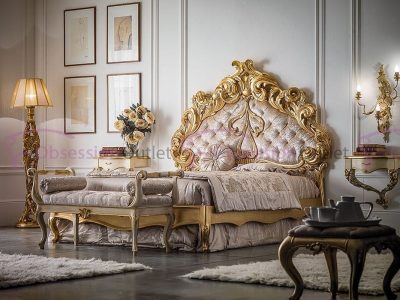In the realm of interior design, luxury furniture stands as a testament to exquisite craftsmanship, timeless elegance, and unparalleled comfort. From opulent sofas to bespoke dining sets, luxury furniture pieces are not merely functional; they are works of art that define and elevate living spaces. In this guide, we delve into the world of luxury furniture, exploring its characteristics, trends, and how to incorporate it into your home.

Defining Luxury Furniture
Luxury furniture transcends the ordinary, embodying Eichholtz sophistication and refinement. Crafted from the finest materials such as premium leather, exotic woods, and sumptuous fabrics, each piece is a fusion of impeccable design and superior quality. Whether it’s a hand-carved armoire or a contemporary chaise lounge, luxury furniture exudes a sense of exclusivity and prestige.
Characteristics of Luxury Furniture
- Exceptional Quality: Luxury furniture is synonymous with unparalleled quality. Meticulously crafted by skilled artisans, each piece reflects meticulous attention to detail and precision.
- Timeless Design: Unlike trends that come and go, luxury furniture boasts timeless design elements. Clean lines, elegant curves, and harmonious proportions characterize these pieces, ensuring they remain relevant for generations.
- Exquisite Materials: From Italian marble to French silk, luxury furniture utilizes the finest materials sourced from around the globe. These materials not only enhance aesthetics but also contribute to the longevity of the piece.
- Customization: Many luxury furniture brands offer customization options, allowing clients to tailor pieces to their exact specifications. Whether it’s selecting the upholstery or altering dimensions, customization ensures a one-of-a-kind creation.
Trends in Luxury Furniture
- Modern Minimalism: Clean lines, geometric shapes, and understated elegance define the modern minimalist trend in luxury furniture. With a focus on simplicity and functionality, these pieces exude a sense of effortless sophistication.
- Art Deco Revival: Inspired by the glamour of the 1920s, the Art Deco revival brings bold colors, geometric patterns, and luxurious materials to contemporary interiors. Statement pieces such as velvet sofas and brass accents epitomize this trend.
- Sustainable Luxury: As environmental consciousness grows, sustainable luxury furniture has emerged as a prominent trend. From eco-friendly materials to ethically sourced wood, these pieces offer both style and sustainability.
- Tech-Integrated Designs: With the rise of smart homes, luxury furniture has embraced technology integration. From built-in speakers to wireless charging capabilities, these futuristic designs seamlessly blend functionality with style.
Incorporating Luxury Furniture into Your Home
- Focus on Statement Pieces: Start by selecting a few key pieces that serve as focal points in each room. Whether it’s a statement sofa or a designer dining table, these pieces set the tone for the entire space.
- Mix and Match Styles: Don’t be afraid to mix different styles and eras of luxury furniture to create a dynamic and eclectic look. Pair a contemporary coffee table with a vintage armchair for a unique and personalized aesthetic.
- Pay Attention to Scale: Consider the scale of each piece in relation to the room size and other furniture. Oversized furniture can overwhelm a space, while undersized pieces may appear out of place.
- Layer Textures and Fabrics: Add depth and visual interest to your interiors by layering different textures and fabrics. Mix soft velvet upholstery with sleek metallic finishes for a luxurious yet inviting ambiance.
Conclusion
Luxury furniture transcends mere functionality, embodying the epitome of elegance, craftsmanship, and sophistication. From timeless classics to cutting-edge designs, these pieces elevate living spaces, transforming houses into homes. By understanding the characteristics, trends, and principles of incorporating luxury furniture, you can curate a truly exceptional interior that reflects your unique style and personality.
